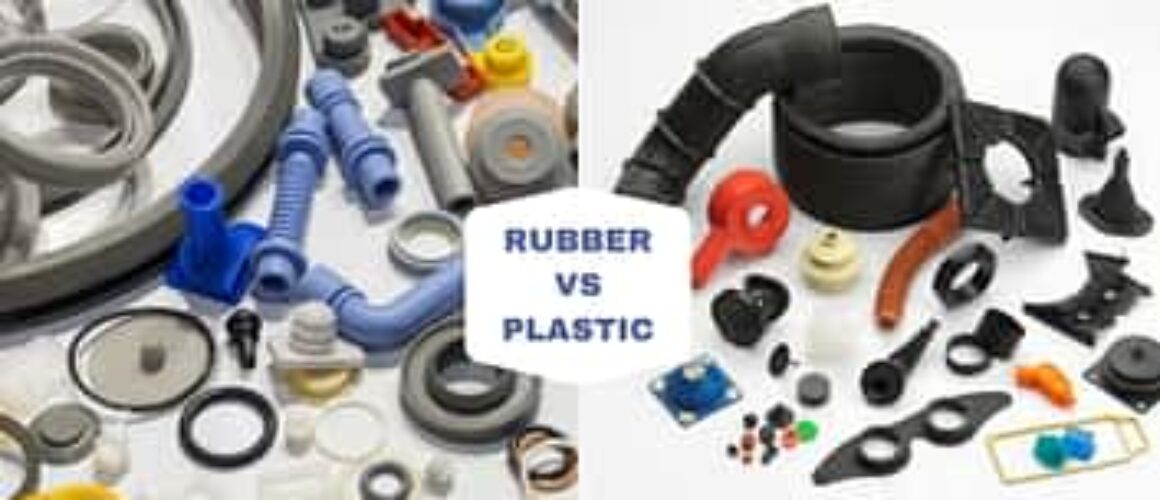Is Rubber Better Than Plastic ?
In the past, people have seen the progress of technology. From the simple usage of wood and cement to the invention of metal, mankind has really made great progress to become what they are today. Along with this progress are some changes to their lifestyle. These changes were brought about by the materials surrounding them, and two materials that revolutionized man’s life today arerubber and plastic.
It is quite easy to differentiate between the two. By simply looking at each material, one can immediately tell that a particular thing, or object, is made of rubber and not plastic, or vice versa. The only confusion between the two is when the term polymer is used. Yes, a polymer as a term that greatly denotes plastics, but nonetheless, this term also describes the characteristic of rubbers. Although rubber is more of the specific elastomer (a viscous or elastic variation of polymers), it is still considered to be a polymer for example, CR (chloroprene rubber, neoprene); SBR (styrene butadiene rubber); NBR (nitrile butadiene rubber); and EPDM (ethylene propylene diene methylene).
Certain plastics such as PVC(poly vinyl chloride) and polyethylene can be compounded and cured to have properties that are considered rubber-like. PVC is commonly used in rubber flooring. Vulcanization is an irreversible chemical process which transforms the putty-like, dough-like, or chewing gum-like rubber into a product that has tensile, elongation and memory similar to a rubber band. This amazing transformation from one physical state to another is what makes rubber different from plastic.
Plastics are usually thought of as thermal plastic materials. In other words, when they get hot they soften, and when they get cold they harden similar to candle wax. Rubber, however, over a much higher and lower temperature range will maintain its original room temperature physical properties such as elongation, memory, tensile and hardness. Rubber is tough, holds shape once formed, even at high temperatures. It stretches, snaps back, has good tensile strength and is medically safe, soft, pliable, and pure. It is used to make Sealing products like o rings, washers, seals, grommets, bush etc., automobile tires, rubber bands, sealing gaskets for food boxes, stoppers for medical industry & various other products for a wide range of industrial applications.
Whereas, Plastic has no stretch, it is not pliable, is brittle, and cracks easily. Plastic does not typically have great strength, can’t withstand dishwasher heat. It does not have a good temperature range, does not stretch and is lightweight.
When it comes to choosing the right materials for our products, we always do our research. We want to make sure you’re getting the safest, highly durable, heat resistant, non-toxic & most eco-friendly options for your products. That’s why, when we were creating our leak-proof sealing solutions, we chose rubber over plastic.
CHARACTERISTICS | RUBBER | PLASTIC |
ENVIRONMENT SAFETY | Biodegradable | Non Biodegradable |
DURABILITY | Highly Durable | Cracks Easily |
RECYCLABLE | Yes | Yes |
HEAT RESISTANT | Highly heat resistant | Can’t resist heat melts easily |
HARDNESS | 40- 90 | 20-100 |
ELONGATION STRENGTH | High elongation Strength | Does not Stretch |
LEAK PROOF | Can be molded to any shape, can stretch & fit into any component. | Cannot provide sealing as it is hard, cannot stretch & break easily |
| FDA COMPLAINT | Yes | No |
Rubber is durable, and more eco-friendly than plastic. It lasts longer, and stands up better against heat and cold than plastics. It’s safer for your products, too, with no estrogen-mimicking toxins like BPA to worry about. It is odorless, stain-resistant, hypoallergenic, and has no open pores to harbor harmful bacteria.
Rubber is recyclable, even though you might not be able to leave it with your curbside pick-up, and it can be incinerated safety without toxic off-gassing. When burned, silicone reverts back into its harmless ingredients: amorphous silica, carbon dioxide, and water vapor (unlike plastic which releases toxins when burned).
Thankfully, you won’t have to worry about rubber breaking or cracking for a long time! It’s super durable, resisting melting, breaking, and warping. Chances are our sealing products will outlast for a longer period of time.


